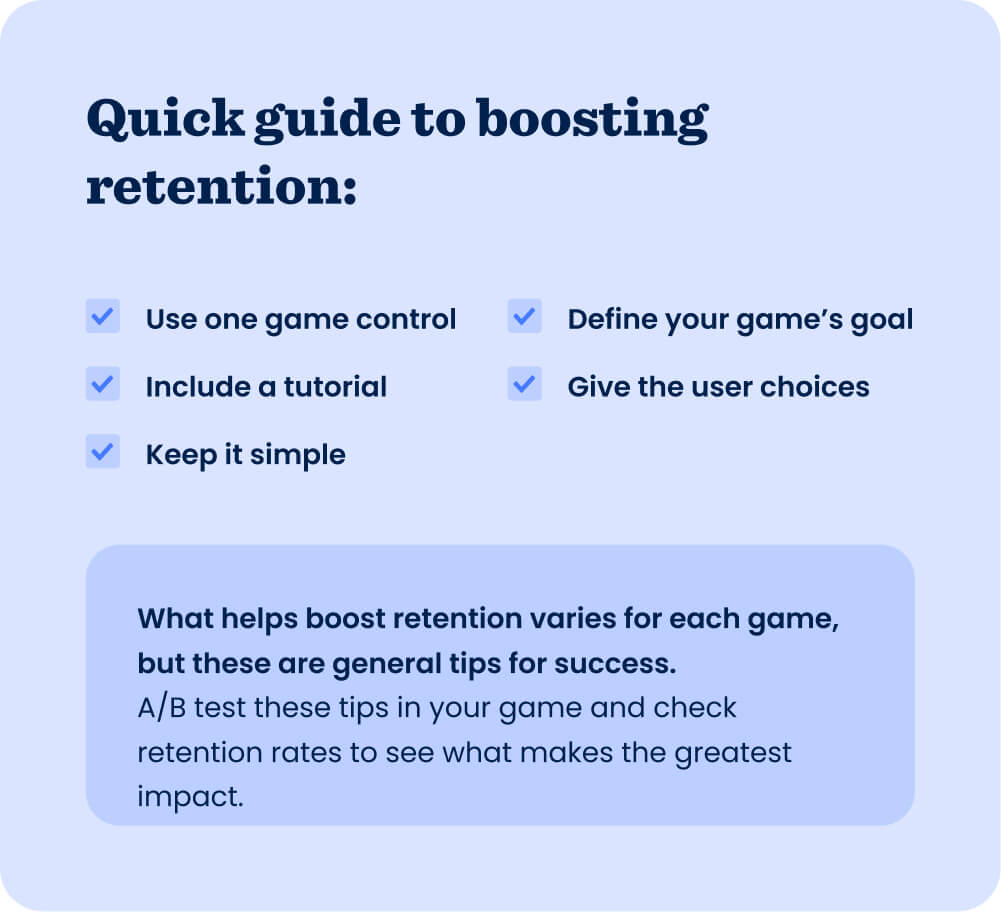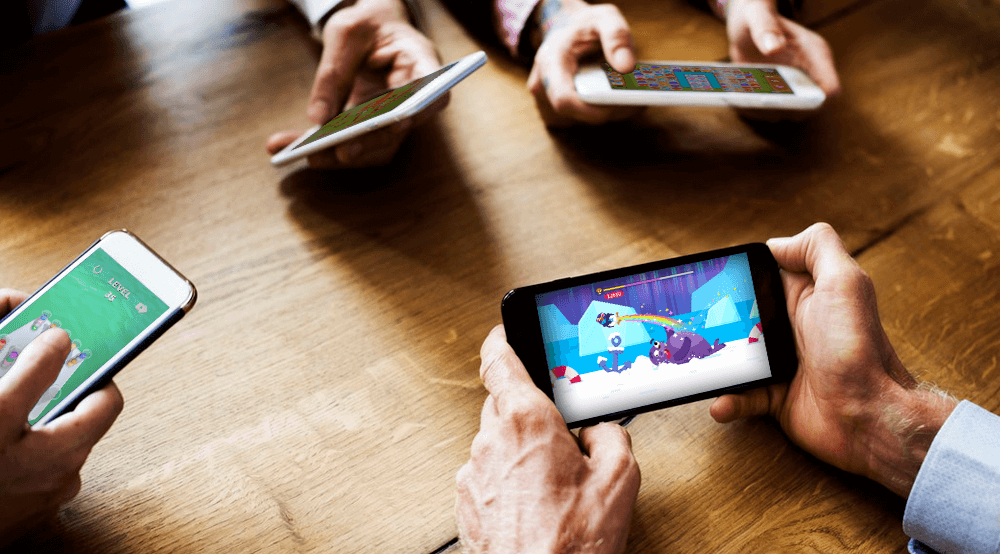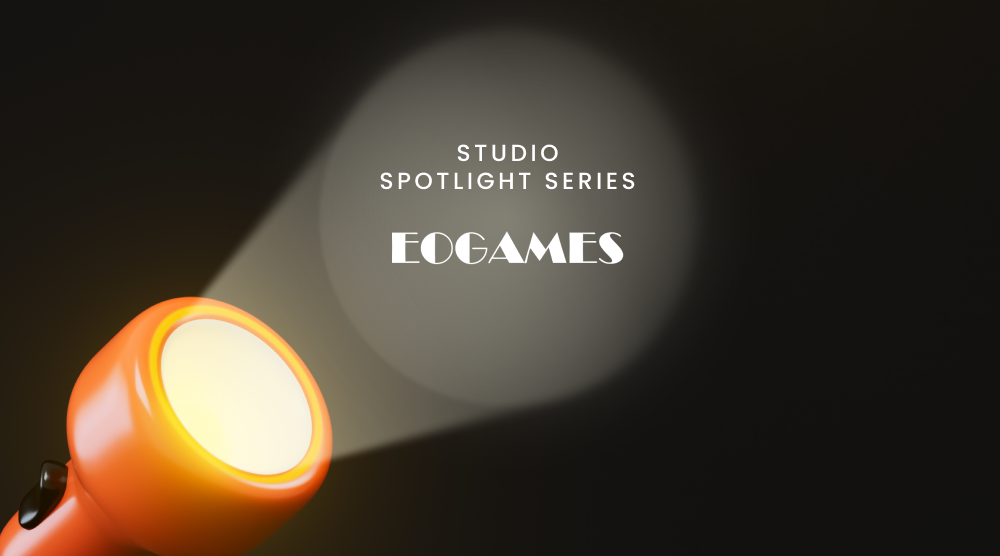You can change your game’s character, add 30 more levels, and use an eye-popping color scheme, but when push comes to shove, retention comes down to one thing: fun. If your game isn’t giving people that sense of enjoyment, retention rate is going to be low. But if you can tap into player psychology and instill the sense of fun people are looking for when they play hyper-casual games for those few minutes on their office break, then you’ll see retention soar.
Suren Melkonyan, Game Designer at Supersonic, uses real-life examples from Supersonic games to show the best practices for improving retention that address player psychology around expressions of fun. Read on for his tips.
“I’m free”
The sense of freedom is one of the strongest ways to express fun - giving users the ability to make choices keeps them playing for longer. In Bridge Race, for example, users collect tiles to build their own bridges and advance to the next level. They also need to avoid enemies that are building their own bridges. There’s freedom in the game for players to decide how to achieve those goals - for example, they can bump enemies, focus on building their own bridges, or destroy enemies’ bridges. Tapping into player psychology in this way helped Bridge Race achieve 45% D1 retention and become the world’s most downloaded game in Q2 2021.
“I’m special”
When users feel like they’re getting access to something that gives them superpowers or instills a sense of being special, they’re more likely to enjoy and continue playing. Bazooka Boy is a great example of this - users blast through obstacles with special weapons. Even the description on the Google Play Store entices users by giving them a power they don’t have in real life to make them feel special: “Blast through levels and destroy everything with a bunch of amazing weapons.” Players loved shooting down enemies and buildings, leading to a D0 playtime of 1500s and an LTV of over $1.5 in the U.S.
“I know”
Feeling a sense of accomplishment or discovery is another way users find enjoyment - for example, hyper-casual puzzle games that make players feel satisfied when they solve the puzzle. Sort It 3D gives users this sense of accomplishment by building their confidence over the course of the game. The first few levels are very easy so users can understand the goal of the game and how it works. Gradually, the game gets more difficult and instills an increasing feeling of satisfaction that encourages them to keep playing. The gameplay was so effective and creating this feeling that the game reached #1 on both app stores in under a week.
“I’m proud”
Playing a role or character that makes users feel empowered and proud encourages them to engage with your game for longer. That’s because there’s an altruistic element that taps into player psychology of wanting to be the hero. For example, in Elemental Master, users wield the elements to prevent enemies from getting through - they play the hero. The game achieved 1400s playtime and reached top 10 on both iOS and Android, indicating that tapping into this expression of fun can help games succeed.
“I belong”
Players want to feel like a part of a larger group - it feels fun to play with friends and be accepted by them. In Hide ‘N Seek, users play in a group that makes them feel accepted and instills a sense of belonging. The game isn’t about killing enemies - it’s about being social and having fun with others. The enjoyment users got from feeling like they belonged while playing helped get the game to a 48% D1 retention rate and reach #1 on Android in the US.
Quick tips for boosting retention
The above examples give insight into user psychology and common expressions of fun. Here are some additional best practices you can try to boost retention.

Choose one control
Players can get frustrated if your game has more than one control. For example, if your game requires users to hold the screen and tap at the same time, it can feel non-intuitive and challenging to play. Think about the hyper-casual game audience - it’s everyone, so some users may have never played a mobile game before. Make sure it’s as easy as possible for anyone to play your game by using just one control.
Have a tutorial
Tutorials teach players how to play your game - which they need to know to start having fun. Have a clear, simple tutorial that explains the control and goal of your game, and even make it your first level. Check that the tutorial is easy to understand by running QA with your friends or family. I like to give a game to my mother and see if she understands how to play it - she’s not a gamer, so if she knows how to play then it’s a good sign the tutorial is clear.
Define the goal
Does your game have meaning? It’s not enough to have good graphics and visuals - you still need to give users a clear purpose or goal. For example, in Join Clash, users collect stickmen to beat the opposing crowd of stickmen at the end of the level. But imagine if there was no showdown at the end - users would wonder why they’re collecting stickmen and what was the goal. Without understanding the purpose of a game, users aren’t likely to keep playing because they’ll likely feel confused and unsatisfied.
Give users options
Players have a more dynamic gameplay experience if they have options. They like to be told what to do, but they should still have the flexibility and freedom to play. Remember that “I’m free” expression of fun? That comes into play here. However, don’t overwhelm them with choices. If you go into the grocery store to buy orange juice and see too many options, you’re probably going to get frustrated. The same idea applies to hyper-casual games - keep it simple by giving users a maximum of 3 options.
Make it easy
Users play hyper-casual games when they have a moment - usually just a few minutes - of free time. During these times, they’re seeking a mindless break, a way to relax, and effortless fun. If users open your game and it’s too challenging, they’re going to get frustrated and stop playing.
Familiar is fun
The best ways to increase retention depends on your game’s genre, but users should feel like your game is familiar. They’ll be encouraged to return to your game if they had a fun experience playing it before - that feeling of knowing what to expect because they’re familiar with the gameplay and it taps into their psychology of fun is what boosts retention.
Users will be encouraged to return to your game if they had a fun experience playing it before.
I think about how this is exemplified in Squid Game. In the show, childhood games comprise the challenges, and part of the reason players decided to return is because they knew what to expect and were familiar with the rules and gameplay. Your game’s stakes aren’t as high (hopefully) as Squid Game, but this popular show confirms what we know about retention in hyper-casual games - familiarity and simplicity are key.
Let's put these tips to good use
Publish your game with Supersonic



